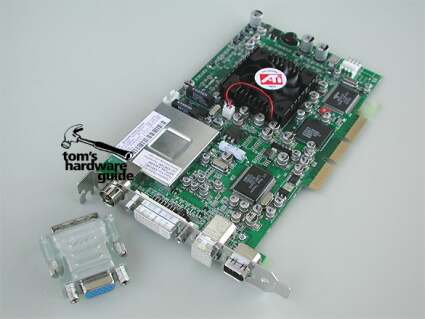ATI All In Wonder RADEON 8500 DV
Introduction, Continued
A conveniently compact input/ output block, which is attached to the card through a special plug, acts as the connection for external video devices. Thanks to a strip of double-sided tape (included in the package), it's possible to attach this box to the PC case or a desk without a problem. One of the FireWire ports can be found on the input/ output block, and the other can be found on the slot bracket of the AGP card. The latter is even capable of becoming a power supply. For FireWire functionality, ATI only provided its AGP cards with an AGP to PCI bridge.
Another new feature is the remote control, which lets you operate the ATI multimedia software. A device that is attached via USB acts as the reception base, and because the remote control operates through radio waves, there's no need to have direct visual contact with it, so you can even operate the software from another room. This could come in handy when the TV is located in an adjacent room, for instance.
Just as with the normal RADEON 8500 boards, the All In Wonder has two RAMDACs, which allows for dual view capability. Unfortunately, a second monitor can't really be used with the All In Wonder, since this functionality is limited to TV-out only. The TV image on the second monitor can be adjusted completely independently of the resolution and the refresh rate of the primary monitor.
The RADEON 8500 3D core, which has recently been discussed in various articles ("See the Related Links box to the left"), ensures that the necessary 3D gaming requirements are met. However, the All In Wonder is clocked significantly slower than the standard 8500s. Instead of 275 MHz, the chip runs as 230 MHz. Also, the memory is only clocked to 190 MHz (380 MHz DDR), instead of 275 MHz. The reason for this is the memory module, which, at 5 ns, is pretty slow. According to ATI, faster memory modules would have made these cards much more expensive, and therefore less attractive.
Get Tom's Hardware's best news and in-depth reviews, straight to your inbox.
Current page: Introduction, Continued
Prev Page Introduction Next Page Hardware - The Card In Detail